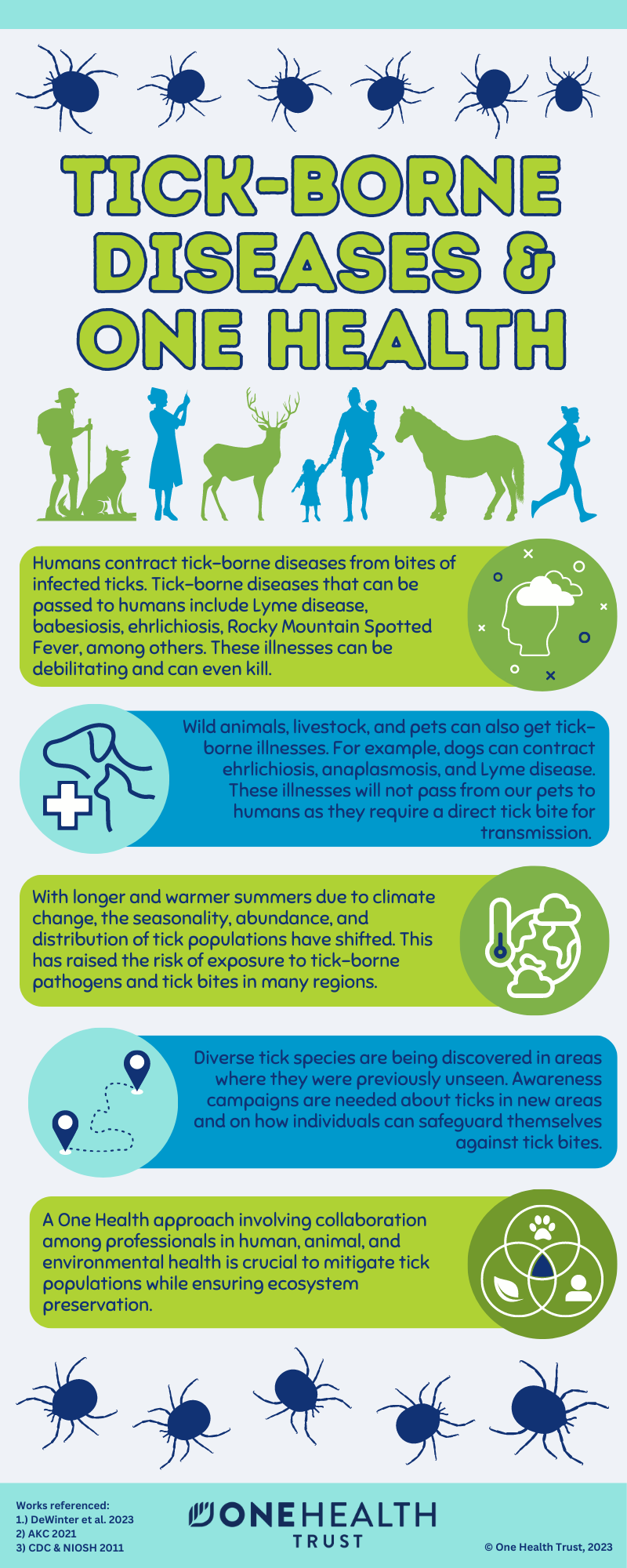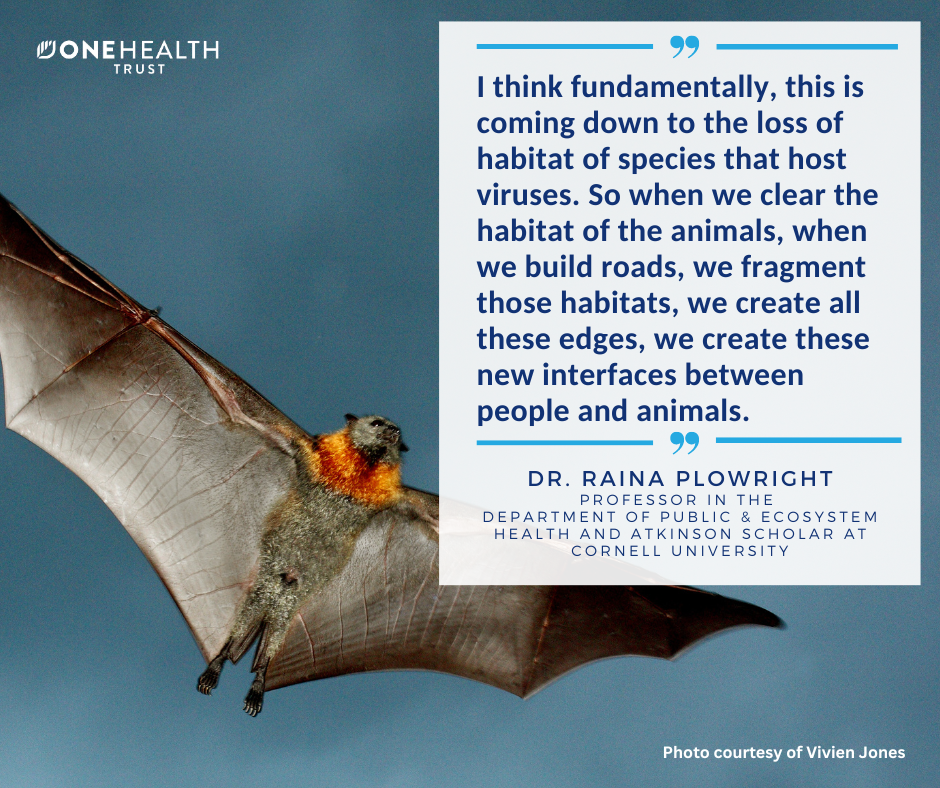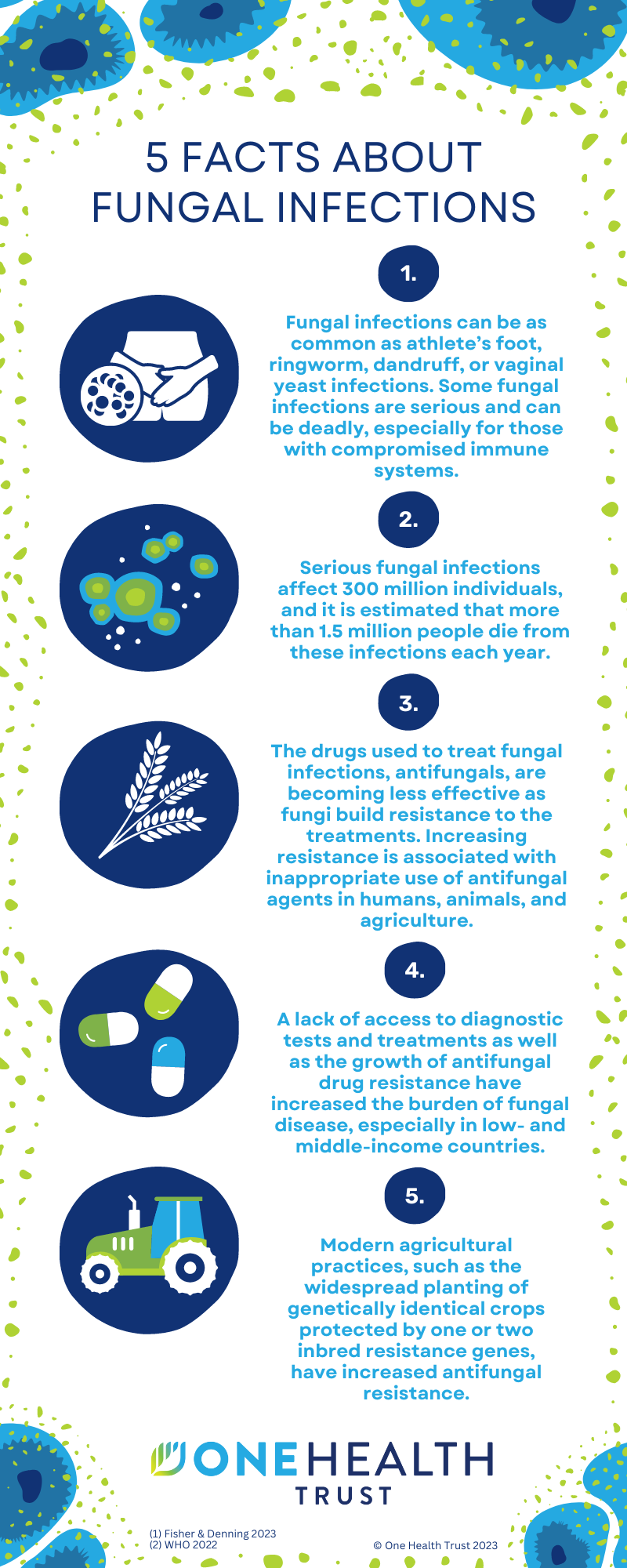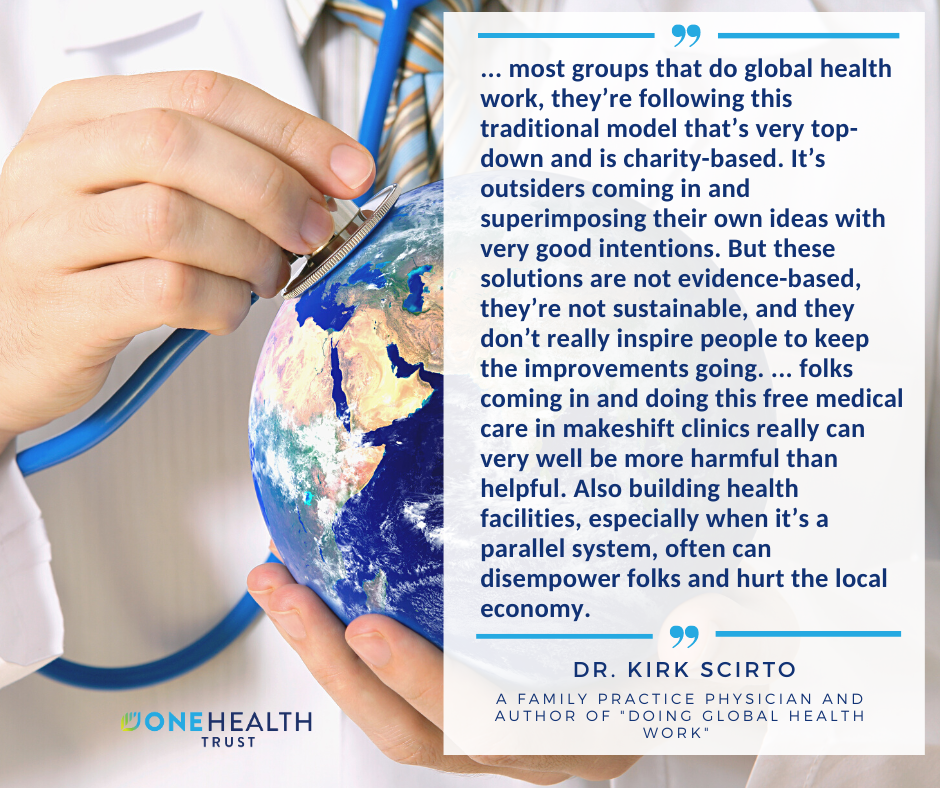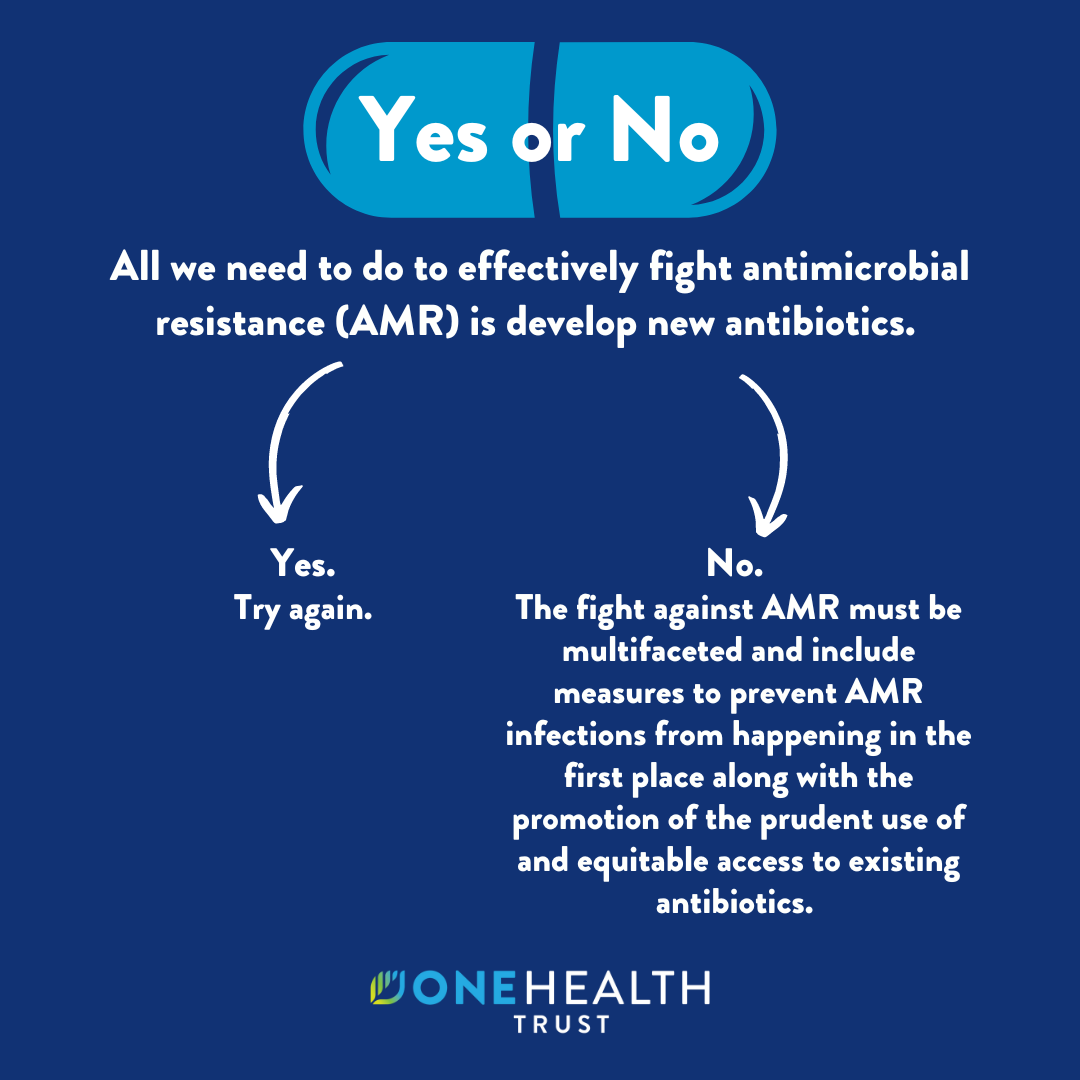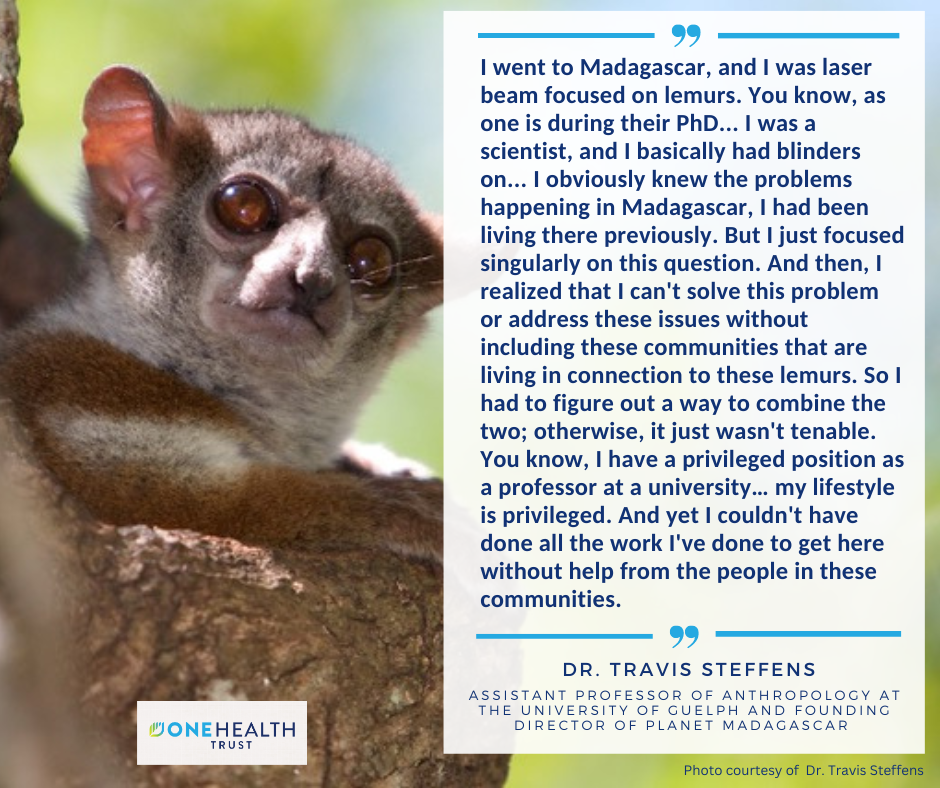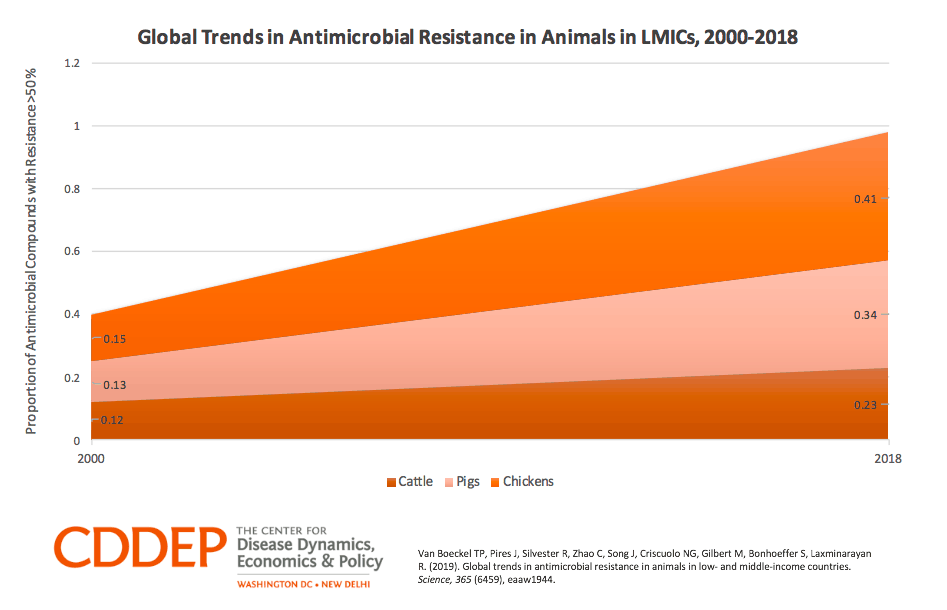
October 07, 2019
To map resistance trends in food animals across developing countries, CDDEP researchers developed a geospatial model using data from point-prevalence surveys that reported rates of antibiotic resistance in animals and food products. The analysis included 901 point-prevalence sureys between 2000 and 2018 and focused specifically on common foodborne pathogens including Escherichia coli, Campylobacter spp., non-typhoidal Salmonella, and Staphylococcus aureus.
The study found that the proportion of antimicrobial compounds in food animals that showed resistance higher than 50 percent (P50) increased overall between 2000 and 2018. Among the developing countries included in the study, p50 increased from 0.15 to 0.41 in chickens and from 0.13 to 0.34 in pigs, while plateauing between 0.12 and 0.23 in cattle. The highest rates of resistance were identified in antibiotics commonly used in food production, including tetracyclines, sulfonamides and penicillins.

